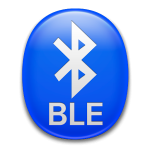IoT devices are already becoming the next inevitable turn towards tomorrow, the big question that comes up in every CTO or decision maker’s mind is which technology to invest into so that one can expect to get the best.
This article explains the key differences between Bluetooth and Wifi, two prevalent technologies used in IoT devices for connectivity to help understand better and make the decision-making process easier.
Before we understand the difference between Wifi and Bluetooth technology, let’s first understand what is IoT. Though there is a full writeup on what is IoT, in a nutshell enabling a thing to talk to the internet is called the Internet of Things. Say for instance the thing is the chair that you are currently sitting on and you love your chair. So, you would like to know if anyone else uses your chair while in your absence. I’ll put a pressure sensor on the chair and this sensor would connect to the internet in a way that when someone sits on the chair, the pressure sensor would immediately notify you. Eventually, the things in the internet of things will start to communicate with each other, so say in our current example the pressure sensor senses that there is someone on the chair and that is not you, it will tell the handle of the chair to send a mild current so as to give the intruder a shock.
For this to become a reality, devices need to have the capability of talking to each other, and for this, they have to communicate wirelessly. This need has given birth to many wireless technologies for devices that can wirelessly connect. Some better than the other and I have often been asked a question that there are a number of wireless communication technologies available in the market today viz. Z wave, Zigbee, Wifi and Bluetooth, which ones of these technologies have a future and why. So, I decided to write up a blog on the difference between bluetooth and Wi-Fi, to begin with, as these wireless technologies were born even before the IoT was a thing. In this blog ahead, I have tried to compare the two fierce wireless communication technologies on the internet of things (IoT) basis certain criteria.
Criteria to base the difference in the technology vis-a-vis the Internet of Things
Market positioning
This refers to the consumer’s perception of technology in relation to competing technologies. Also, refers to how widely is the technology used across homes, offices and public spaces, the world over.

According to IndustryArc.com the BLE (Bluetooth low energy) market was valued $4.5 billion in the year 2017 and anticipated to grow at a CAGR of 19.7% during 2018-2024. The various end-users assessed include health care, sports and fitness, electronic devices, automotive, asset tracking and proximity marketing, consumer electronics, industrial automation, wearable electronics.

| We all use Wi-Fi in our homes, offices, you find them available in public places like shopping malls etc. and today I guess trying to conceive our worlds without Wi-Fi is un-imaginable. It might seem that Wi-Fi is the go-to wireless technology for the IoT market, but the reality is far from it. It may be an important element in the implementation of IoT projects but not a contender for the hottest connectivity solutions of the Internet of Things. |
Topology
It is the pattern in which the nodes or things connect with each other. There are four principal topologies used in networks: bus, ring, star and mesh. Both technologies use 2.4 Ghz band and have a short range, that is work on short distances.

Bluetooth employs a few different network topologies. The most common is a point-to-point topology in networks known as piconets
Bluetooth Low Energy, also supports multiple network topologies, including point-to-point, broadcast and mesh networking.
With mesh networking topology, even if one node or relay or gateway fails, the self-healing mechanism will find another route to deliver the message. This means that there is no single point of failure.

The Wi-Fi network uses a star topology wherein all nodes connect to the central hub directly, take for example a wireless router. Yes, it’s true that devices can be added and removed from the network without disrupting its entire structure and flow of data. But there is a major flaw with this topology. Once this hub fails, the entire network becomes inoperable as individual nodes cannot communicate with each other. Also, a complete rebuild of the network configuration is required to replace a broken hub.
Power Consumption
This refers to the electrical energy per unit time, supplied to operate something

In terms of network robustness, Bluetooth Smart is better than Wifi. The secret to its energy performance is the fact that the protocol has been optimized to transport very large amounts of very small data packets. Exactly what is needed in IoT applications. First of all, it is capable of transferring data with a rate of 1 Mbit/s and with 3 advertising channels, theoretically, the data rate can be tripled. The power consumption is very low as the low energy IoT devices to wake up from sleep for only one millisecond and then go back to sleep.

In the universe of wireless communication, multiple devices are expected to be communicating with each other. With just a coin battery, these devices are expected to be running for extended periods of time. As Wi-Fi is a high-bandwidth communication standard, the power requirements are very high. So, building a battery-powered Wi-Fi device that can run for a reasonable amount of time with a decent performance seems almost impossible.
Data Range
This is a term to denote the transmission speed, or the number of bits per second transferred over a radio signal

At 1 Mbps Bluetooth, today has by far the best Data transfer rate among its competition viz. ZigBee, Zwave, Thread et. At a higher data rate, the packets can reach the destination faster and help with freeing up radio waves and as a result, there are minimal packet collisions and lower network saturation. A 33 bytes packet size in LE and 15 bytes in Mesh, when transferred at 1 Mbps means there is a lower duty cycle, which also translates to longer battery life. Bluetooth support for Low Energy devices implies that devices that spend most of their time in sleep mode and wake up to quickly perform the tasks and go back to sleep again, give the capacity of the devices to run for years.

A Wi-Fi device has the capability of transferring hundreds of megabits per second. On the newer version of 802.11ac and 802.11n is even faster. Though these numbers look impressive, it is an overkill for an IoT application like Asset Tracking or Warehouse Pallet Tracking for instance, where instead of data-heavy content, the asset tags or beacons broadcast simple commands and tiny bits of information like sensor data or state change signals.
Range
It is defined as the physical distance of wireless (over the air) communication between two devices

In a line of sight, the bluetooth radio signals can be received by a receiver of up to 500 meters, but with bluetooth mesh, this range can be easily extended to much more using relay nodes. Using a simple TTL (Time to Live) variable, the system architect can decide how many hops a message could take to reach the destination. This means that if one node fails, the mesh network will find another functioning node to send the data packets to its intended destination.

With the 802.11n and other flavours of Wi-Fi, the range is pretty decent, and the range can be extended by using signal extenders and additional access points. But as discussed on the topic of Topology, extending the range by adding additional hubs does not work for the Internet of Things, as when one of the hubs malfunctions, the entire network becomes inoperable and nothing will work unless the hub is replaced and network configurations reconfigured.
Compatibility with Smart Phones
It is the ability of the wireless protocol to communicate natively with a smartphone or any handheld device.

Bluetooth has improved customer experience and we all know that. Right from listening to music or getting data wirelessly from the fitness tracker or any other smart device, bluetooth has become the defacto standard for smartphone communication. The fact that bluetooth natively communicates with the smartphone app, the number of possibilities for improving user experience has increased multifold. Only a smartphone app is required to talk to bluetooth devices directly and that is all that is required to build, configure and control a network of connected bluetooth devices.

Though Wi-Fi can also be found in every smartphone, tablet or laptop, the fact that it requires the networks, central access point to communicated and does not communicate directly, makes Wi-Fi inefficient for IoT devices. Unlike Bluetooth where the setup of IoT devices can be done directly using an app, the same cannot be done using Wi-Fi as the smart devices do not talk to smartphones natively and they first need to get on the same network.
Onboarding
This refers to the speed and convenience with which a new device can be added to the wireless network

Thanks to this direct connectivity, Bluetooth provides the end-user with what could be called a Remote Display and a Remote Keyboard for each smart device, no matter how small or simple it is. One of the major benefits resulting from this is the simplicity of the commissioning and provisioning (in case of bluetooth mesh) process. With other protocols, manufacturers often have to come up with the wildest ideas to facilitate adding a new device to the existing network. With Bluetooth, the entire procedure can be made simpler, more intuitive and safer.

Just like bluetooth, every smartphone, tablet and laptop is also provided with a Wi-Fi capability, and theoretically, onboarding a smart device should have been as straight forward as the bluetooth device; but that is not the case. A Wi-Fi smart device would need to know the network password to get on the network and you need the smartphone to provide it with the details, but then you need the smartphone to also be a part of the network. This makes things a bit tricky.
Interoperability
It is a characteristic of a product or system, whose interfaces are completely understood, to work with other products or systems, at present or in the future, in either implementation or access, without any restrictions

Bluetooth mesh specification is perfectly poised for the era of interoperability. The idea of cross-vendor compatibility of smart devices is now a reality. Various bluetooth profiles have been introduced through an impressive library of mesh models. Various profiles like friend node profile, relay nodes profile help devices from various manufacturers of sensors and smartphones to participate in the network

One may be tempted to consider that Wi-Fi is interoperable since it is used all the time to interact between two devices, but these interactions are possible only because behind these devices are humans who are controlling that interaction. Wi-Fi alone cannot handle that as it does not define an application layer, which means that device-to-device communication is not possible.
Future Developments
It is the trajectory of the technology life cycle. How strong is the community supporting the technology will define how much the adoption will be trusted.

With real-life use case for Smart Homes, Building management system, Industry 4.0, Remote Asset Monitoring etc, built over BLE and Bluetooth mesh networking specifications, it seems that bluetooth is all set to become the go-to technology for low-bandwidth communications in the IoT sector. The bluetooth SIG is perfectly placed to ensure a strong future for bluetooth as through this comparison we have seen that no other wireless technology has ever been so deep and comprehensive.

Energy Efficiency, cost, resource heaviness, speed of onboarding and other form factor constraints have been the major challenges to use Wi-Fi for IoT deployments. The Wi-FiAlliance is aware of these shortcomings and has made efforts by introducing standards like the 802.11c and 802.11an with a promise to reduce the challenges that legacy 802.11 technologies struggle within in the resource-scarce IoT space. But, it’s far behind in the race and only time will tell when the Alliance will come back with answers on the current challenges.


